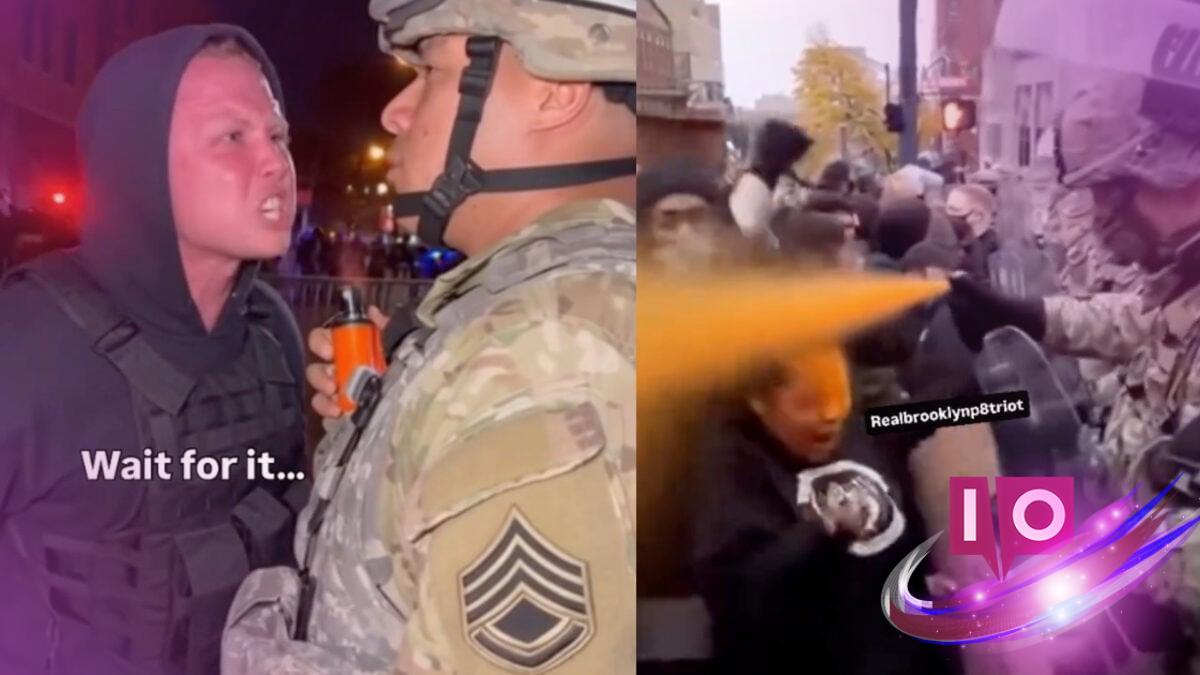Last week, OpenAI unveiled Sora 2, its latest AI video creation tool, alongside a new app for crafting and sharing videos. The launch has sparked a surge in realistic AI videos across social media platforms, reigniting debates around intellectual property rights. However, what’s particularly striking about Sora 2 is the emergence of videos featuring AI-created protesters.
These videos are not your typical protest footage. They mostly depict supporters of former President Donald Trump generating clips showing fictional protesters being mistreated by federal agents. Trump’s recent attempts to deploy National Guard troops to cities like Portland and Chicago have been legally challenged, yet ICE agents remain active and intimidating immigrant communities across these locales.
One trending faux protest video, garnering over 40 million views on Instagram, features an AI character in black confronting a soldier in fatigues.
“What’s your name, soldier?” the AI protester demands, with a text overlay reading “wait for it” before the military figure retaliates with orange pepper spray, shouting back “Sergeant Pepper.”
The video has spread quickly to platforms like TikTok and X, where some viewers appear oblivious to its AI origins. For instance, the actor James Woods, a known Trump supporter, described the clip as “Haiku-level brilliant” on X, highlighting a concerning lack of awareness regarding the content’s authenticity.
Another viral video circulating on Facebook, Instagram, and X features AI protesters chanting “no queso, no cheese,” a twisted take on the activist slogan “no justice, no peace.” In this clip, the AI figures also face chemical spray.
This version alone has surpassed 1.5 million views on X, with captions echoing sentiments common among Trump supporters—specifically, the phrase “I voted for this.”
It’s worth noting that the phrase “I voted for this” has become a catchphrase for far-right Trump supporters in reaction to particularly harsh actions taken against their political adversaries.
The Instagram clip boasts the caption: “Liberals acting like clowns – got treated like clowns by federal agents – goodbye – FAFO,” using the acronym for an explicative phrase that warns against misbehaving. While some social media users have pointed out its AI nature, others continue to assert its reality.
Interestingly, shorter Sora videos are being compiled into larger montages of AI-generated content, often mocking the idea of protesters being financially motivated, a typical accusation from right-wing circles aimed at individuals protesting Trump.
Why are these fake protester videos gaining traction when authentic footage exists? For example, Rev. David Black was shot with pepper balls while peacefully protesting outside an ICE facility in Chicago last month, illustrating the real violence faced by demonstrators.
Rev. David Black stood in front of a Chicago-area ICE facility and began to pray.
The masked ICE agents on the roof responded by firing pepper balls, with one striking him in the head
religionnews.com/2025/10/07/i…
Moreover, another video showcased a woman speaking with police before being unlawfully sprayed in Portland. These real accounts of brutality do not fit the narrative pushed by Trump and his followers, who claim their interventions are purely about restoring law and order in cities they describe as crime-ridden.
Statistically, violent crime is at a 50-year low. Instead, Trump’s actions seem directed at instilling fear, affecting communities and economic stability, as evidenced by businesses in Chicago paralleling losses to the onset of the covid-19 pandemic.
Why are such fabricated protest videos being disseminated now? An apparent necessity for the far-right narrative justifies brutal crackdowns on dissenting individuals. Trump’s decision to send troops to Oregon might be influenced by outdated footage of past protests, demonstrating an eagerness to react to misinformation.
Interestingly, Trump himself has shared an AI video claiming the existence of a miraculous “med bed” that can cure all ailments. Although the clip was deleted from his Truth Social account, the motivations behind its sharing raise critical questions about his discernment concerning facts.
This scenario recalls a time in April when Trump showcased a photoshopped image of “MS-13” on a hand, unwavering in believing it as truth.
Ultimately, this phenomenon casts a shadow on the interplay between reality and manipulated imagery. Social media has enabled the rapid spread of these distorted narratives. Disturbingly, the portrayal of heroic federal agents punishing fictional leftist rioters detracts attention from the real atrocities occurring in America today.
If you’re interested in understanding the complex landscape of social media and its influence on public perception, continue exploring related content on Moyens I/O.
